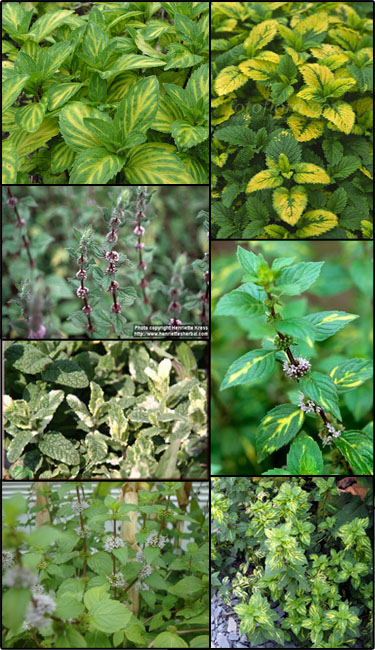Wild mint (Mentha xgentilis)
 Common Names: Field mint, Gingermint, Redmint, Scotchmint
Common Names: Field mint, Gingermint, Redmint, ScotchmintDescription: Hybrid between Mentha arvensis and Mentha spicata.
Habit: Perennial, reproducing by seed and rhizomes, very aromatic.
Leaves: Opposite, with petioles, strongly scented, pinnately veined, narrow to oval, with small teeth on margins and with minute glandular hairs on leaf surface.
Stems: Square, usually branching, up to 2 1/2 feet (75 cm) tall; barbed hairs on angles and sometimes on sides of stem.
Flowers: Clustered in axils of upper leaves. Pink, lavender or occasionally white in color. 1/8 to 1/4 inche (3-6 mm) long, with 5 teeth and prominent nerves in the tube.
Fruit and seeds: Nutlets less than 1/16 inch (1.5mm) long, smooth, light brown in color, each with an irregular dark line on the convex side.
Habitat: Native to North America but weedy in nature. Can be found in meadows, pastures, along ditches and shores.
Reproduction: By seeds and rhizomes.
Similar species: Resembles other species of Mint (Mentha spp.).
Monitoring and rapid response: Hand pulling may control small populations. General use herbicides such as glyphosate, are effective at controlling wild mint. Credits: The information provided in this factsheet was gathered from the University of Illinois Extension "Weeds of the North Central States" and the USGS NAS program.
Individual species images that appear with a number in a black box are courtesy of the Bugwood.org network (http://www.invasive.org).Individual photo author credits may not be included due to the small display size of the images and subsequent difficulty of reading the provided text. All other images appear courtesy of Google (http://images.google.com).
